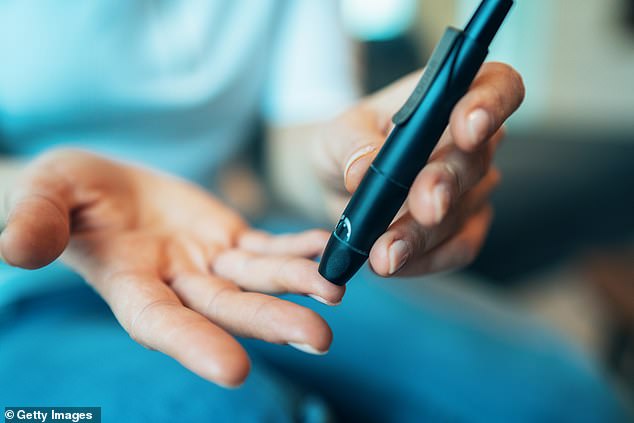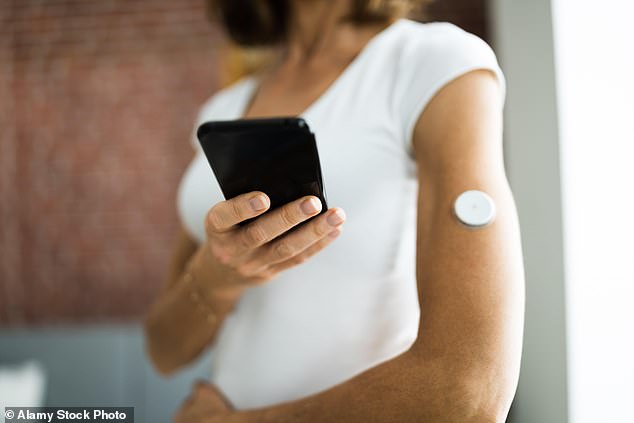Medics clash over diabetes diagnoses for young women after flawed tests lead to worries 35,000 patients have been wrongly given the all-clear
- Faulty diabetes tests mean 35,000 women may have been wrongly given the all clear
Diabetes experts have clashed with calls for a radical overhaul of the way younger women are tested for the disease.
Top doctors claimed last week that 35,000 women may have been wrongly excluded from type 2 diabetes due to testing errors and warned that late diagnosis could put them at risk of developing serious complications such as heart disease.
A report by researchers at Salford Royal Hospital suggested that younger women may suffer from diabetes symptoms with lower blood sugar levels than older women and therefore suggested lowering the diagnostic threshold for those under 50.
Around 4.3 million people in the UK live with diabetes, 44 per cent of whom are women, most of whom have type 2, which is often associated with excess body fat. The condition means that sugar (or glucose) levels in the blood can rise too high, causing heart attacks, strokes, kidney disease, eye problems and even limb amputations.
The study, which looked at the blood sugar levels of more than a million people in England and Wales who were being tested for diabetes, found that women under 50 had far lower levels on average than men.

IN CONTROL: Blood sugar levels can be analyzed using a fingerprint test

Researchers estimate that nearly 35,000 women under 50 may have been incorrectly told they did not have diabetes (stock image)
Some experts believe that this can be explained by a woman’s menstrual cycle, which affects the accuracy of the test for measuring average blood sugar levels over three months. But others have dismissed the idea.
“Researchers have gone too far,” says Prof. Naveed Sattar, an expert in cardiovascular and metabolic health at the University of Glasgow. “Just because someone is screened for diabetes doesn’t mean they have diabetes. Many may have suffered from other problems that cause symptoms, such as fatigue.
“Second, diabetes treatment is about preventing complications associated with high blood sugar, such as kidney disease and blood vessel problems.” There is no evidence that lowering the diabetes threshold (for diagnosis) would reduce the likelihood of women developing these conditions. “
One way to diagnose type 2 diabetes is with an HbA1c blood test, which provides a measurement of long-term blood sugar levels. Sufferers have an HbA1c level of more than 48 mmol/mol, but the Salford researchers found that female patients under the age of 50 had levels 4.7 percent lower on average than men, arguing that the diabetes diagnosis threshold for it should be lowered to 46 mmol/mol.
However, some say the study ignores the fact that diabetes diagnoses are not always based solely on HbA1c tests.
“It can be diagnosed using various methods, including measuring fasting blood glucose levels and an oral glucose tolerance test,” says Dr. Gary Deed, Chair of the Diabetes Specific Interest Network at the Royal Australian College of GPs. “It would have been best if these authors had combined different methods to confirm the accuracy of the diagnosis.”
Doctors have also cast doubt on researchers’ theory that the menstrual cycle is linked to lower HbA1c levels.
Prof Nick Wareham, co-director of the Institute of Metabolic Science at the University of Cambridge, calls it “unproven”.
He adds: “They try to offer an alternative explanation for sex differences in HbA1c without providing any evidence to support it.”
“Experts in diagnosing diabetes do not believe this research would justify radical changes in the way we diagnose the disease.”
